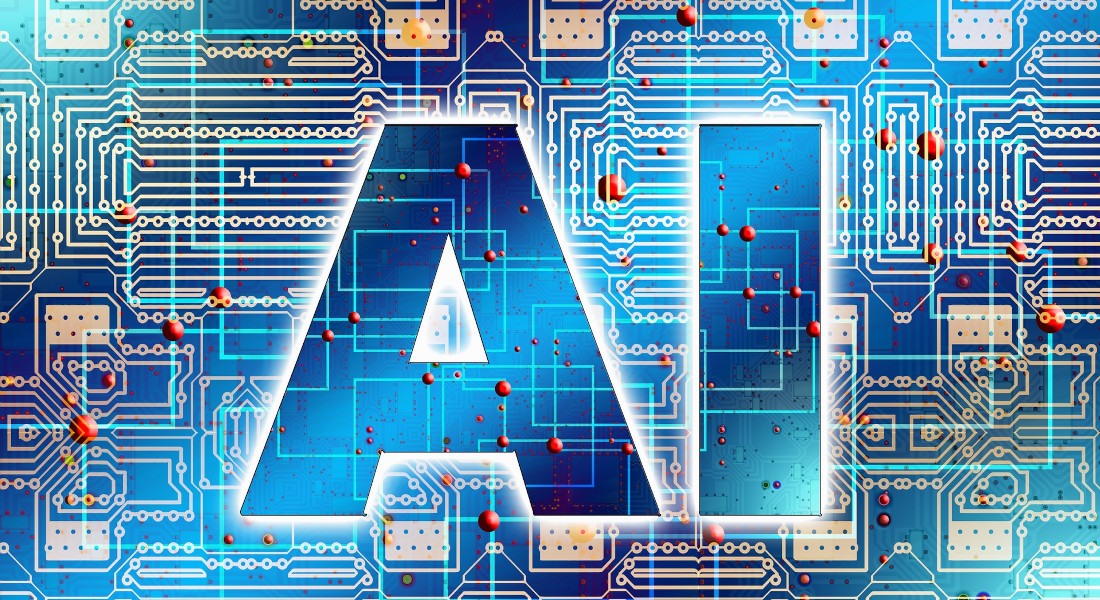Businesses are very quickly integrating AI as a tool to increase efficiency and create new value. While collecting examples of AI implementation in different industries, we have picked up some opportunities to apply AI in logistics.
AI for back-office automation
In a highly competitive, increasingly complex business world, companies that operate global supply chains are under unprecedented market pressure. They need to deliver the highest possible level of service at the lowest possible cost. The internal functions of global corporations, such as accounting, finance, human resources, legal, and information technology, are overwhelmed by the sheer number of small, painstaking, repetitive tasks. AI can provide great opportunities to save time, reduce costs, and increase productivity by taking over routine operations.
Intelligent automation (IA) is a term that encompasses the intelligent automation of business processes using combinations of AI and robotic processes. It replaces so-called clerks using software robots that can be implemented into existing IT systems.

As we can see in the picture above, RPA (robotic process automation) is not the equivalent of artificial intelligence. AI can learn and gain insights from unstructured data, whereas RPA can only act based on pre-defined explicit rules. RPA cannot learn or develop anything on its own.
Identifying financial anomalies

Management decisions of logistics companies are based on a huge amount of information from third parties: carriers, temporary staff, charter airlines, and other contractors and vendors. This causes a constant increase in the workload of the accounting staff. Millions of invoices and statements from thousands of vendors, partners, and providers must be processed by someone. And this is where AI technologies can isolate critical information such as invoice amounts, dates, addresses, customer codes, and product codes to make sense of the loosely structured information.
Once the data is well categorized, the RPA can take it and input it into the existing accounting system to generate orders, run payment processes, and send confirmation emails to the customer. All without human involvement!
The consulting firm Ernst & Young (EY) takes a similar approach to identifying fraudulent invoices. Using machine learning to carefully categorize accounts and detect anomalies, EY automatically avoids penalties, fines, and other undesirable consequences of accounting errors. In doing so, EY's system achieves 97% accuracy. The same logic can be extended to any business process with frequently recurring tasks.
Cognitive contracts
Global logistics companies operate large fleets of vehicles delivering goods around the globe. Leverton is using AI to simplify contract processing and management. The system they built uses natural language processing to categorize contract language, control policies, and approvals. Many contracts are several hundred pages long. When both humans and machines are included in the contract approval, these documents can be processed faster.
Intelligent customs

Intelligent customs refers to customs brokerage processes automated by AI. These processes typically involve 4 main steps:
- Shipment data and documents (waybills and invoices) are received from customers. Disparate data formats and varying degrees of completion of certain documents must be harmonized before a customs declaration can be filed.
- Once the required documents and data are fully reconciled and harmonized and the goods declared, all documents must be transferred into the approved customs codes.
- Customs officers validate the information received, supply it with tax calculations and let the goods through.
- Brokerage commission is invoiced to customers according to commercial terms and conditions.
The biggest problem with customs declarations today is that they rely on the manual processing of documents, requiring legislative, regulatory, and industry expertise. In addition, it is also a very stressful process: more and more information is coming in every hour. It needs double-checks and validation with the client, owner, regulators, and government forms. Of course, all these requirements are hard to fulfill for ordinary people, who are also fatigued. As a result, fatal errors and frustrations in the profession can occur, not to mention delays in certain deliveries.
AI may be the optimal solution for customs declarations. For example, a system similar to IBM Watson learns all legal aspects, regulatory requirements, customer base and customer specifics, and country conditions to automate the filing of customs declarations. Such systems can handle the same type of operations quite easily. But if unusual cases come their way, a qualified specialist will intervene. And by the way, the results of such intervention can be used as machine learning!
How to apply artificial intelligence in your supply chain?
Moving current logistics operations into a proactivity, personalization, and autonomy model is not easy. It requires excellent niche expertise.
Moving to smart logistics is a multi-year journey requiring leadership skills, a good understanding of business drivers, AI experience, and organizational culture. They will continuously support the business development of AI functions in your logistics company.
Project definition: data analysis and business value drivers

It is worth asking yourself: what business problems can be solved with AI? Do these problems really need AI-based solutions?
Business value drivers must be carefully selected before embarking on an AI project. These value drivers can be cost savings, improving customer experience, improving efficiency by gaining insights you previously could not access, etc. AI is increasingly integrated into systems like CRM, ERP, and HRM, driving significant improvements in these areas. For more on how AI can enhance workforce management, explore human resource management software development.
You need to start with the simplest forms of data analytics and increase in complexity as the organization needs it. AI developers for hire can help assess these factors and guide the project from the start. Assessing what data is needed for the AI project is also critical. After all, it is impossible to get something from artificial intelligence without providing it with data. Is there enough data well processed and available relevant to the problem you are going to solve? More specific but equally important questions might be: how clean is this data, how often has it been collected, and how can project team members get it?
AI team and its skills

If you have no the necessary talents within your company, they will have to be augmented with the help of IT staff providers like MaybeWorks. You should realize that there is a huge shortage of such competencies in the world now. Experienced data scientists and software engineers with machine learning experience are almost unheard of outside the technology industries. To get them "in-house" requires quite serious investments. Given these limitations, the IT staff augmentation model can be an effective solution in terms of cost optimization.
Culture: trust, quality, and learning

Change management and the cultural shift that AI adoption entails can lead to heavy solutions in terms of technical saturation. So the first thing to think about when starting a project is trust. You need to establish a high level of understanding of organizational values and their correlation with the AI implementation strategy.
The next thing to consider is a culture of tolerance for quality and performance. AI systems are designed as probabilistic tools. They are only secondarily Big Data systems. If you train AI on insignificant or inaccurate data, there's a good chance the outcome will disappoint you. But data can improve over time! It is very important not to abandon the project at the very beginning after getting results that are below expectations. You need to manage the project flexibly and constantly look for improvements in the system.
Your staff must get used to challenging questions such as: how good/accurate enough does the system need to be to appear commercially survivable? When well-designed and implemented, AI can make more complex and correct decisions over time. Therefore, it is important to “nurture” an AI system from its earliest development stages.
The third cultural factor is the organization's willingness to constantly share information and learn. Just as AI systems improve as more data enters them, organizations must also be willing to embrace and adapt such systems to their needs.
Conclusion

Artificial intelligence is thriving today. In the consumer world, AI has been around for a long time and likely forever. Leading business industries such as technology, finance, and telecommunications are aggressively moving towards AI. The industrial sector, particularly logistics, is just beginning its journey in this direction.
But the logistics industry may well benefit from the experience of colleagues from other industries. Corporate AI will definitely ease the labor-intensive tasks of a person's daily work routine.
As Big Data accumulated during the processing of business transactions from both public sector and private sources becomes more structured and accessible to AI, the logistics network will shift towards a proactive and predictive business paradigm. The computer vision and NLP will help logistics operators see, understand and interact with the world in a new, more efficient style.
These AI technologies will create a new class of intelligent logistics automation with built-in human-like capabilities.
We believe that AI in logistics is full of enormous potential. As leaders of major international supply chains continue to engage in digital transformation, AI can help them do so at the level of daily routine operations. And we at MaybeWorks can quickly augment your teams with necessary MERN developers. Feel free to contact us 24/7!















